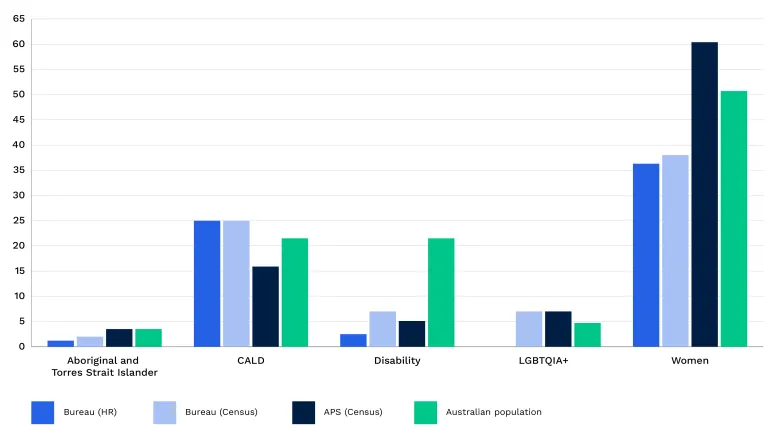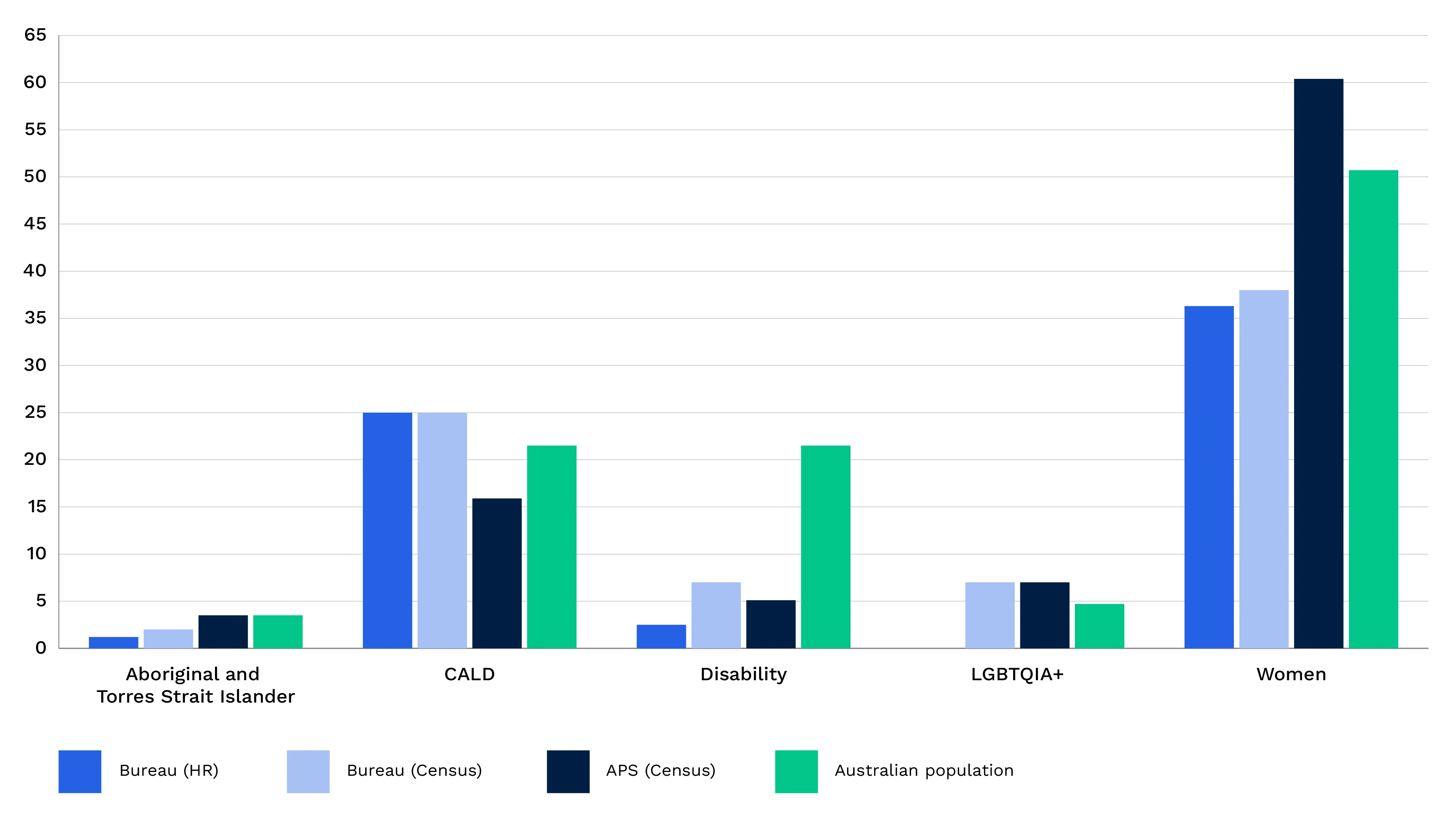The baseline provides us with a way to measure our progress and impact, ensuring we identify pockets of excellence and focus areas.
The diversity of our workforce
The Bureau has strong representation of colleagues from culturally and linguistically diverse backgrounds and people who identify as LGBTQIA+. Women, people with disability, and Aboriginal and Torres Strait Islander peoples are underrepresented.
We aim to better understand trends and equality indicators, with a focus on providing environments that attract and retain a diverse workforce. We see potential in understanding high attrition rates of women in senior roles and expanding our focus to provide greater access to opportunities and career progression for diverse groups and remove artificial barriers.
Self-identification gaps suggest a higher representation of people with disability and Aboriginal and Torres Strait Islander peoples. Additionally, 6% of respondents reported being neurodivergent and 12% were unsure.
Workforce diversity graph

Sources: 2021 Australian Bureau of Statistics, APS 2023 Census results, Bureau of Meteorology 2023 Census results, Bureau HR systems Nov 2023, 2022–23 Public Sector Workplace Gender Equality Agency report, 2023–24 Bureau D&I Consultation results, 2021 Gartner Diversity, Equity, and Inclusion Functional Benchmarking Survey, Rainbow Health Australia 2020 Research Matters: How Many people are LGBTIQ+, Dept of Industry Science and Resources STEM in the Australian Public Service workforce report 2022.
| Source | Aboriginal and Torres Strait Islander | CALD | Disability | LGBTQIA+ | Women |
|---|---|---|---|---|---|
| Bureau (HR system) | 1.2% | 25.0% | 2.5% | Data not collected | 36.3% |
| Bureau (Census) | 2.0% | 25.0% | 7.0% | 7.0% | 38.0% |
| APS (Census) | 3.5% | 15.9% | 5.1% | 7.0% | 60.4% |
| Australian population | 3.5% | 21.5% | 21.5% | 4.7% | 50.7% |
We are committed to improving the accuracy of our demographic data by building safety and trust, and focusing on the following indicators to show that we are strengthening the diversity of our workforce:
- Workforce composition meets internal and APS employment targets.
- Reduced gaps of self-disclosure of personal information in HR and Census results.
- Reduced experiences of discrimination.
- Equity indicators reviewed regularly, and discrepancies addressed.
- Improved perceptions of inclusion in our workforce in the APS Census survey.
Employment targets
The Bureau is committed to a workforce that represents the communities it serves. The following internal targets have been established:
- Aboriginal and Torres Strait Islander peoples: 1.5% by 30 June 2025, with consistent incremental improvement to reach 3% by 30 June 2028 (APS target 5% by 2030).
- People with disability: 3% by 30 June 2025, with consistent incremental improvement to reach 5% by 2028 (APS target 7% 2027).
- People from culturally and linguistically diverse backgrounds: APS target 25% at the Executive Level 2 and Senior Executive Service (SES) levels by 2029.
- Women: 38.5% by 30 June 2025, with consistent incremental improvement to reach 45% by 30 June 2028 (there is no APS target).
